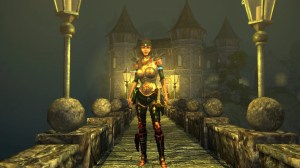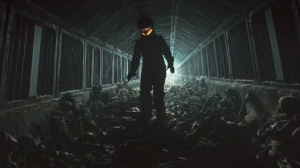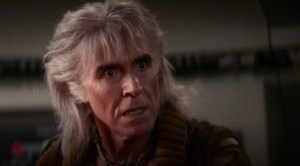
Lost Soldiers #1 offers readers a very clear picture of where the story is heading in its first few pages. A vivid streak of blood is painted against a dingy setting coated in earthen shades, leading the eye to what appears to be at least one character’s fate. Yet the miniseries’ debut issue is not defined by convoluted timelines or a cleverly designed plot. After an introduction filled with blood, mud, and poetic waxing on the nature of violence, Lost Soldiers focuses on developing its characters above all else. It’s an approach that enhances the underlying themes and split timeline far better than most too-clever-by-half comics conceits manage in 2020, and it offers a deeply compelling story focused on images that are difficult to witness.
Videos by ComicBook.com

The narrative of Lost Soldiers is split across 40 years. In 1969 men struggle to survive the Vietnam War—torn between long, taut silences in the darkness and the spray of bullets and blood during the day. Four decades later and some of those same men find themselves a part of a new struggle on the US-Mexico border—engaged with special ops seeking to strike at cartels in Juarez. The divide quickly illustrates one of the comic’s central themes without ever needing to address it directly. The young soldiers drafted to wage a horrific war they never sought have become the leaders guiding more young men into a conflict with its own set of bloody, imperialist tendencies. There is a cycle at play and the question posed from the very beginning is whether anything besides death can possibly end that terrible cycle.
Artist Luca Casalanguida drafts some truly outstanding work in realizing both the men and violence that defines their lives on the page. Goran Parlov’s work on Fury and various Punisher miniseries has defined the look and feel of the Vietnam War in comics for the past decade, and Casalanguida captures a similar, thin line that makes the fragility of the human form apparent while still allowing for strength, rage, and terror to seethe inside those bodies. There’s an added layer of grit to their work on these pages, one enhanced by Moore’s colors. Textures of blood, muck, and other filth make each combat sequence feel dangerous, and those colors are used to add layers within many panels. The nightmares and flashbacks take visual form on the page as young soldiers confront death for the first, and old soldiers struggle to maintain their focus on it.

There’s plenty of shouting in the midst of combat and talk that follows in the wake of its mistakes, but Kot wisely offers readers plenty of space to discover the characters who are central to both the past and present wars being fought. Hawkins and Kowalski discuss pop culture in 1969 and prostate exams as they enter their 60s. It’s naturalistic dialogue which opens a window into their worldviews, as well. A few lines shared with another soldier in their platoon, Berg, sets up the most impactful splash of the issue a few pages later. Even as questions circle about the present mission in Juarez and who exactly survived Vietnam (and what parts of them survived), the people and relationships are already clear. This includes a dynamic between Kowalski and another commander, Burke, that provides a similar dynamic as Platoon with Burke falling into the role of the villainous Bob Barnes filtered through visions of Frank Castle.
Even with the direction unclear, Lost Soldiers #1 provides readers everything they need to follow those titular characters on the road to hell. It’s perspective on war and the multi-faceted cost of violence is apparent from the jump, and grounding that cost in a few, well-realized individuals provides a potent framework on which to construct this exploration. This may only be the first few steps into two distinct conflicts, but readers are prepared to witness a war story that is unwilling to valorize or forget what war stories are built upon. There is ample promise to be found here, even if what follows is bound to be anything but pleasant.
Published by Image Comics
On July 29, 2020
Written by Ales Kot
Art by Luca Casalanguida
Colors by Heather Marie Lawrence Moore
Letters by Aditya Bidikar
Design by Tom Muller
Cover by Luca Casalanguida and Heather Marie Lawrence Moore








